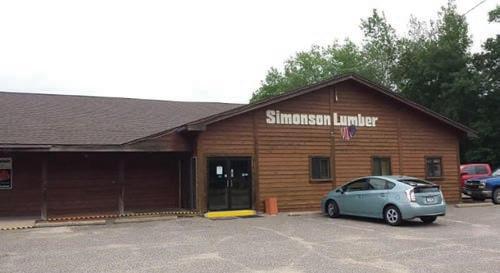WWPI SPECIAL ISSUE: TREATED WOOD IN THE WEST
Extra! Extra! Treat all about it!
Raise margins with value-added treated wood By David Koenig ALL PRESSURE TREATED lumber is not equal. Beyond preservative type and retention level, wood preserving companies are increasingly adding “extras” to their treatments to make their products more durable and more attractive. In adding colorants, water repellents, stabilizers and mildewcides, commodities suddenly become something more. Colorants—usually redwood or cedar hued—can be added during treatment or a pre-stain can be applied prior to treatment, saving the builder from having to finish it on site. They are perhaps the most widely accepted add-on to treated wood, at least within certain regions. “Pressure treated wood with color has seen increased popularity for the past several years,” confirmed Tom Horvat, Koppers Performance Chemicals. “Pre-stained brown wood has been the norm in the western U.S. for decades. The Colorado market primarily consists of treated wood with color. The Northeast and East Coast have several treaters producing wood with pigment. Menards carries brown-pigmented wood almost exclusively in the majority of their locations. “Colored wood is available in decking, dimensional lumber, timbers and deck specialties. Regardless of whether a deck
Products treated with the MicroPro Sienna pigment coloring system to give the wood a warm, natural brown tone that enhances its grain and natural characteristics.
18
n
The Merchant Magazine n
April 2021
is built with cedar, redwood or composite decking on the surface, the treated wood understructure can now match the decking material.” Koppers’ MicroPro Sienna is the leading pigmented treated wood in Canada, “with a 90% market share,” according to Horvat. Viance’s colorant-treated DesignWood is primarily sold in Canada as well, but is also popular in the West and Midwest U.S. Some Viance treaters rebrand it as Barefoot Brown, Red Sedona, and Woodland Brown. Lonza markets wood treated with its Tanatone color technology under its Wolmanized Outdoor Wood brand. Similarly, Wolmanized wood is also available with Lumbrella Plus water repellent or BARamine, which provides improved penetration, stabilization and moldicide protection. “Each dealer is different in what they stock based on their sales and the space they have in their lumber aisle,” said Lonza’s Belinda Remley. “Often, the add-ons available are dependent on what their treater partner offers.” Treated wood with water repellent is generally available without having to special order. Offering “better lumber” can become the calling card of an independent dealer. “I stock only #1 grade KDAT in my 2x lumber,” said Jim Pearce, owner of Pearce Lumber Co., Ruston, La. “I also stock premium deck boards & C&B 1x boards with the water repellent. My customers expect a better product than the box stores.” The key to selling such upgraded options is to ensure end-users are aware of their benefits—and simply that they are available. “Most homeowners think treated wood is all the same,” said Viance’s Edie Kello. “And in a lumberyard, material is stored outside under sheds without point-of-sale materials, so even contractors may not know the added benefits some chemicals in preservatives offered. There are differences.” At Lowe’s, Viance has bundle placards and literature that clearly spell out the advantages of Severe Weather with Ecolife, “the only treatment with an integrated water repellent standardized by the AWPA.” Through its treater partner marketing programs, Lonza also provides in-store promotional material to assist sales associates, professionals and DIYers in understanding valueBuilding-Products.com


















